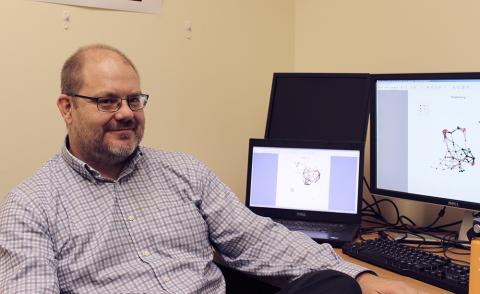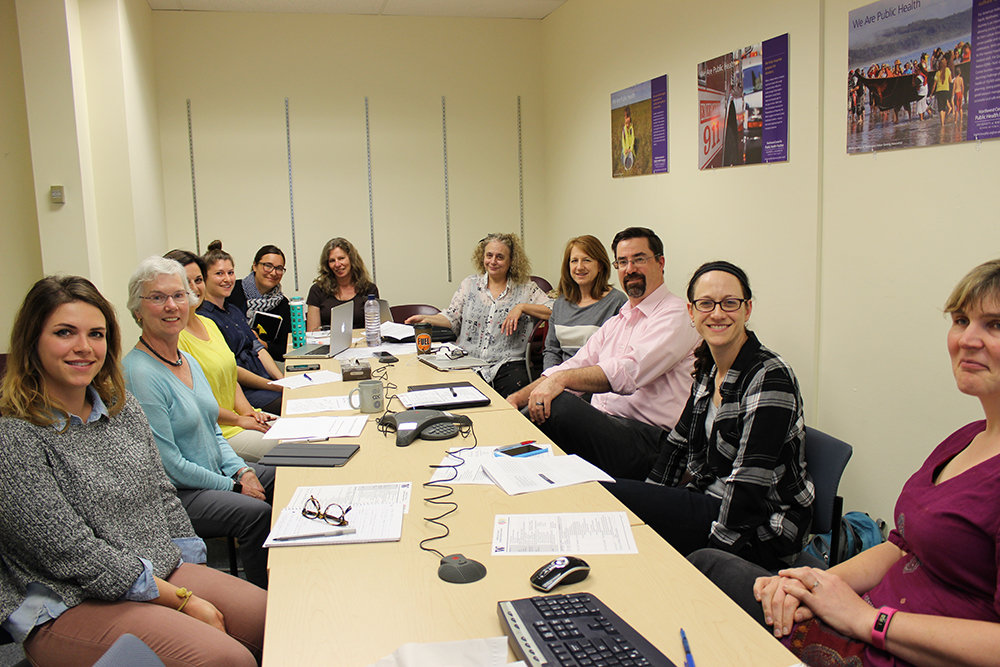
NWCPHP biostatistician applies his skills in analyzing data to interpret results of research findings.
A typical research project at NWCPHP may involve generating and gathering significant amounts of data needed to answer the researchers’ questions. Ian Painter’s task is to help refine the questions and then closely look at the resulting data to help find answers to those questions.
“A challenge for biostatisticians is being able to understand what the needs are of the researcher, and translating those needs into research questions," said Painter, a biostatistician at NWCPHP.
For the past seven years, Painter has shared his skills helping design studies and analyzing data to answer questions posed by NWCPHP researchers. He has been involved in many research projects, and left a mark on some of the most noteworthy research to emerge from NWCPHP.
As a biostatistician, he works with researchers at NWCPHP to help design research studies to ensure that the results of the studies will be statistically valid. Once data from a study have been collected, he conducts the statistical analyses of the data using a variety of statistical techniques depending on the nature of the study, and then works with researchers to interpret the results.
Painter first came to NWCPHP to take part in emergency preparedness research conducted by the Northwest Preparedness and Emergency Response Research Center (PERRC). Previously, he worked with a software development company, and then with a non-profit called Foundation for Health Care Quality.
Painter, who grew up in New Zealand, developed his interest in numbers in childhood. His dad, Brian, and mom, Jane, were both teachers at his high school who encouraged him as he explored his interest in math. After receiving his Masters of Science in Mathematics from the University of Auckland, New Zealand, he went to the University of Washington, where he obtained his PhD in Statistics.
Painter enjoys helping find practical uses for research findings.
“We want to do studies that, no matter what the outcome, provide value,” he said.
He cited the findings of the now-concluded REACH (Rapid Emergency Alerting Communications in Health) project, a randomized, controlled trial that compared e-mail, fax, and cell phone SMS text messaging, to see which one was most effective for communicating public health alerts between public health agencies and health care providers.
“We concluded there were no dramatic differences between the different methods. We also concluded that if you send out too many alerts over a period of time, any one of those messages can get lost in the shuffle,” he said.
Photo of the sunrise over the Olympic peninsula coast taken by Ian Painter during an outdoor hike.
Painter is currently part of a project called Next Generation 911, which examines the impact of new technology on the health of 911 dispatchers. “We’re getting close to finalizing collection of the data,” he said. Researchers, among their other questions, want to find out if mindfulness-based intervention could help 911 dispatchers cope better with stress. Once the research is completed, researchers hope to better understand how new technology impact the health of 911 dispatchers, what can be done to help the 911 dispatchers cope, and help their supervisors better manage future technology change.
When not at work, Painter enjoys spending time with his wife, Lisa, and their two children, Harry, 13, and Duncan, 8. He also enjoys nature photography and hikes around the Mountain Loop Highway in the Cascades.


